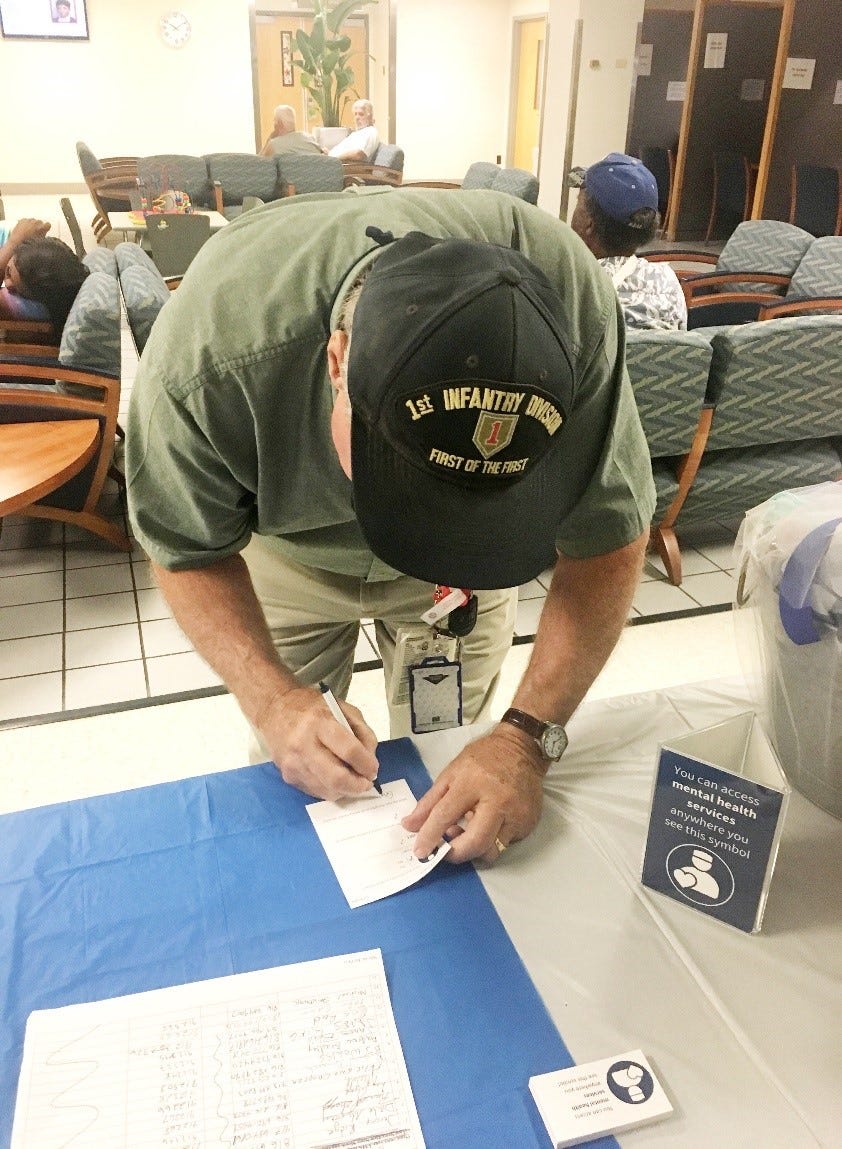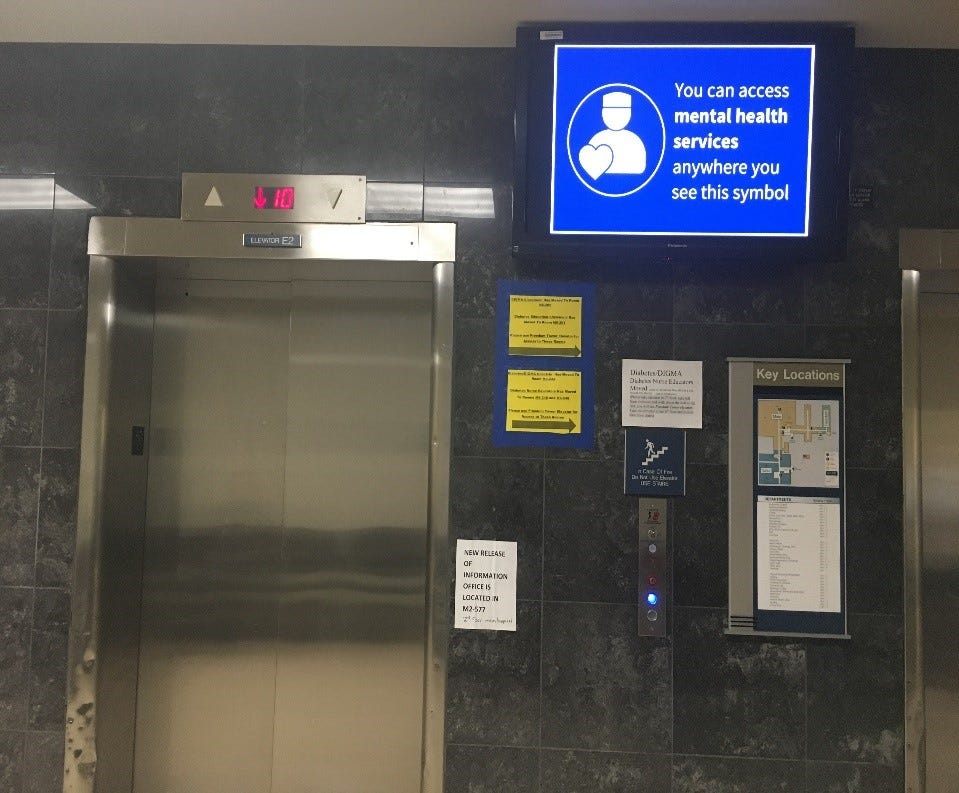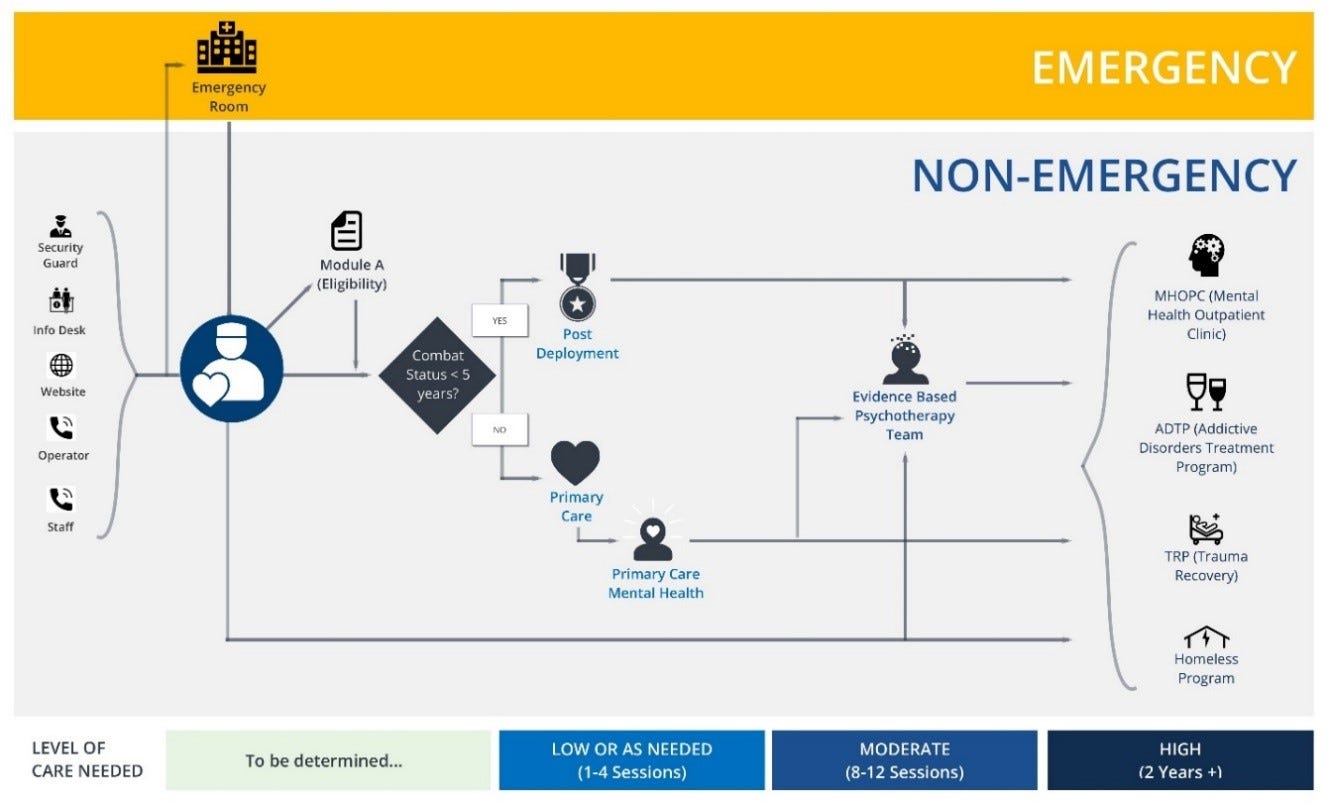Innovation and design streamlines Veteran access to mental healthcare
Lighting the pathway to mental health services while fighting against the stigma that keeps people from asking for help in the first place.
“If I saw that symbol on the wall, I would know to go there. Follow the yellow brick road”- Veteran in Jackson, MS.

Veterans often face an uphill battle when seeking mental health care at the VA. Recently, a Veteran and his spouse, struggling for help, came to the VA, despite frustrating past experiences. Building up the courage to put themselves out there (again) and ask for help, they came to the G.V. (Sonny) Montgomery VA Medical Center (VAMC) in Jackson, MS. However, instead of being sent to mental health services, they were re-routed to the patient advocate office…where they waited. Finally, someone paged Dr. Kelly Buckholdt, a psychologist on staff with mental health. She assisted the couple in getting to the right place.
Unfortunately, this is too common an experience, for both Veterans and Dr. Buckholdt. She discovered that often, Veterans were going to the Emergency Room (ER) for mental health services (among other places) instead of the VAMC’s mental health offices, which ensure the right level and continuity of care. Veterans have described their experience as inconsistent, confusing, and frustrating, causing them to completely turn-away from the help they need. This couple’s experience underscores the current problem with access to mental health services.
What if there was a visual identity, or a brand, for VA Mental Health Services that clearly marks the path to care? Through VA Innovators Network Spark and Seed grants, Dr. Buckholdt and her team of innovators are working on just that.
In 2016, Melissa Chapman, Designer in Residence for VA Center for Innovation (VACI), traveled to VAMCs across the country to learn from Veterans and healthcare providers about their challenges seeking and providing mental health access across the system. While observing Veterans, the team of frontline providers and VACI staff quickly realized that depending on who they asked (security guards, information desk, staff in the hallways), the answer to where they could find mental health services led them to different and conflicting places. The path to care, they came to understand, is a stuck point for Veterans and staff.
By shadowing staff, they realized that each has a very different working understanding of the admittedly complex list and offerings of the various mental health offices, services and access points available to Veterans. In such a complex and ever-changing system, everyone struggles with where to point Veterans, despite best intentions. Taking the opportunity to improve the experience of Veterans and medical center staff in accessing and providing mental health services, these findings were used to design and test solutions to improve how Veterans navigate these services, with an initial pilot at Sonny Montgomery VA Medical Center. The team developed an iconographic symbol (see Figure 1 below) that visually cues Veterans and staff on who to ask for help in navigating mental health services.

The Universal Symbol for Mental Health is simple branding overlay of all mental health resources (people and offices) so that veterans and staff will always know how to connect to mental health. The team tested the symbol among Veterans and received the following feedback from one mental healthcare seeker: “the symbol provides comfort and lets me know I am not alone”. Another Veteran said, “the symbol is useful because it lets Veterans know they are in the right place”.
This welcoming symbol lights the path towards mental healthcare, helps staff navigate mental health services, destigmatizes mental health by proactively reaching out to people, and reduces the number of non-emergent mental health-related ER visits by directing people to the right offices. Building on the successful proof of concept (via Spark grant) at Sonny Montgomery VAMC, and the successful pilots at Sonny Montgomery and Kansas City VAMCs (via Seed grant), Dr. Buckholdt and her team are planning to spread the universal symbol to additional sites in 2018.
The universal symbol can serve as a brand synonymous with mental health so that Veterans know where and how to connect to mental health services, as well as encourage those who are unaware or hesitant to seek mental healthcare.


/image%2F3372852%2F20190512%2Fob_aa2e19_32.gif)


/https%3A%2F%2Fgame-tool.rocks%2Fimg%2Fh3.png)
